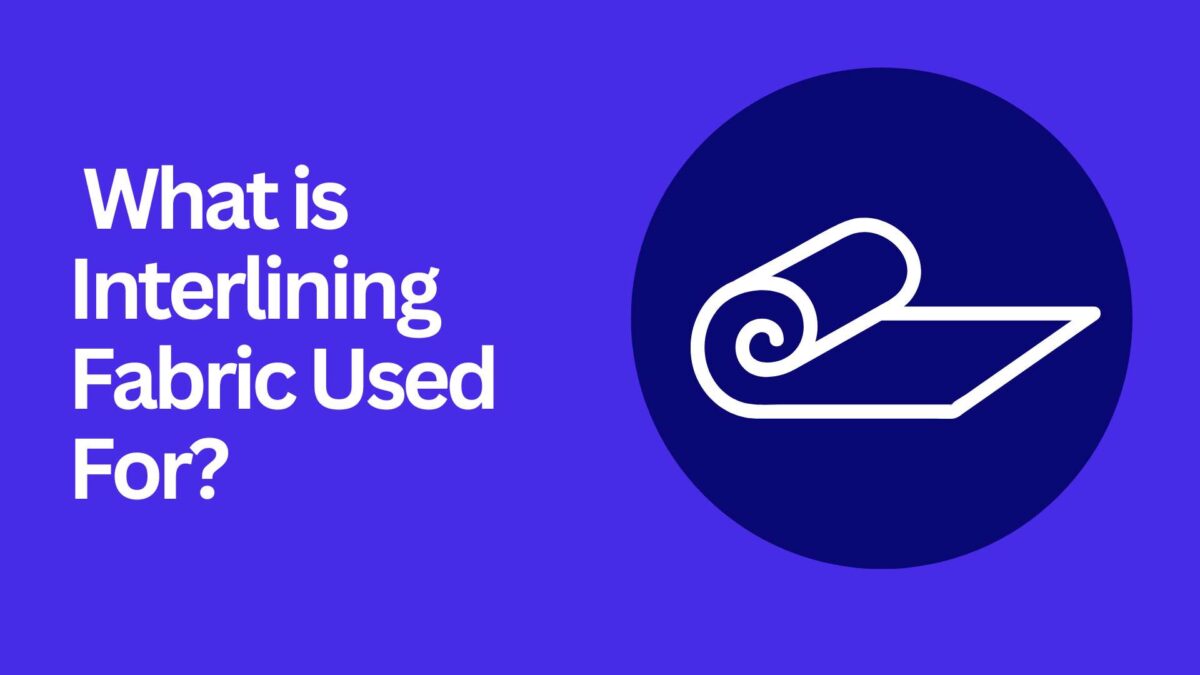What is Interlining Fabric Used For?
Table of Contents
- Demystifying Interlining Fabrics: A Q&A Session
- Expert Tips for Using Interlining Fabrics
- Conclusion and Call to Action
Living in a vibrant city like Mumbai, fashion is all around me. From the colorful sarees adorning women on their way to work to the sharp suits sported by businessmen, textiles are a constant source of fascination. But what truly lies beneath the surface of these stunning garments? It’s the hidden world of interlining fabrics, the unsung heroes that add structure, support, and that perfect finishing touch!
Intrigued? If you’ve ever wondered what makes a collar stand so crisp, a jacket drape so perfectly, or a bag retain its shape, then this guide is for you. Today, we’ll delve into the wonderful world of interlining fabrics, exploring their history, types, uses, and most importantly, how they can elevate your sewing projects!
A Look at Interlining Fabrics
interlining fusible fabric, sometimes referred to as underlining, is a hidden layer of fabric sandwiched between the outer fabric (the one you see) and the lining (if used) of a garment. It acts as a silent supporter, adding structure, stability, and a professional finish to your creations.
A Historical Perspective
The use of interlining fabrics dates back centuries. Tailors in ancient Egypt used papyrus reeds and stiffened leather to add form to garments. As fabrics like silk and wool became more prevalent, natural materials like horsehair and buckram were used for interlining. The invention of non-woven fabrics in the 20th century revolutionized interlining, offering a wider range of options with improved flexibility and breathability.
The Significance of Interlining Fabrics:
Why is interlining so important? Here are some key benefits it brings to your garments:
- Structure and Support: interlining fusible provides essential support for areas like collars, cuffs, waistbands, and pockets, preventing them from sagging or losing their shape.
- Improved Drape: The right interlining can enhance the drape of your garment, allowing for a beautiful flow and silhouette.
- Enhanced Durability: interlining fusible reinforces the fabric, making it more resistant to wear and tear, extending the life of your garment.
- Professional Finish: A well-chosen interlining creates a crisp and polished look, adding a touch of professionalism to your creations.
The Evolving World of Interlining Fabrics

The world of interlining fabrics is constantly evolving, with new innovations and eco-friendly options emerging. Here are some recent trends to keep an eye on:
- Sustainable Materials: With a growing focus on sustainability in fashion, eco-friendly interlining options made from recycled materials like polyester or natural fibers like bamboo are gaining popularity.
- Heat-Activated Interlining: fusing interlining fabrics, which can be ironed onto the main fabric, offer a faster and easier application method, especially for beginners.
- Specialty Interlinings: Technical fabrics with specific properties like stretch or water resistance are being developed for sportswear, activewear, and other specialized garments.
Demystifying Interlining Fabrics: A Q&A Session
Let’s address some common questions that often pop up when it comes to interlining fabrics:
Q: What are the different types of interlining fabrics?
There are two main types:
Woven Interlining: Made from woven threads, offering excellent structure and stability. Ideal for collars, cuffs, and tailored jackets.
Non-Woven Interlining: Made from bonded fibers, offering a wider range of weights and properties. Great for adding body to garments and improving drape.
Q: How do I choose the right interlining fabric for my project?
The choice depends on the weight and drape of your main fabric, the desired structure for different garment parts, and your personal sewing preference. Consider factors like:
Weight: Lighter interlinings for delicate fabrics, heavier ones for structured garments.
Fusible vs. Sew-in: Fusible is easier for beginners, but sew-in offers more flexibility.
Stiffness: Stiffer interlinings for collars, softer ones for drapes or curves.
Q: Can I use interlining fabric without lining?
Absolutely! Interlining adds structure and support, while lining provides a finishing touch and additional comfort. You can choose to use one or both depending on your project.
Expert Tips for Using Interlining Fabrics
Now that you’ve grasped the basics, let’s dive into some practical tips to elevate your sewing experience with fusing interlining:
Always pre-wash your interlining fabric: This helps to prevent shrinkage and ensures your garment retains its shape after washing.
Test the interlining on a scrap fabric first: This allows you to experiment with fusing temperatures and sewing techniques on a similar material before working on your actual garment.
Mark the interlining with tailor’s chalk: This helps you accurately position it on your main fabric before fusing or sewing.
Use wonder clips or sewing weights instead of pins: These prevent damage to the interlining, especially when working with fusible options.
For fusible interlining, follow the manufacturer’s instructions for heat settings and pressing time: Overheating can damage the adhesive and scorch your fabric.
When sewing interlining, use a walking foot: This ensures even feeding of the fabric layers and prevents puckering.
Don’t be afraid to experiment! As you gain experience, you can explore different types of interlining and techniques to achieve the desired results for your projects.
Choosing Interlining Fabrics for Specific Garments:
Here are some pointers to help you select the right fusing interlining for different garment types:
Suits and Jackets: Opt for woven or heavyweight non-woven interlining for collars, lapels, and shoulders to provide structure and a crisp finish.
Coats: Use heavyweight non-woven interlining for warmth and structure. Consider a water-resistant option for raincoats.
Dresses and Skirts: Choose lightweight to medium-weight non-woven interlining to add body and improve drape without adding bulk.
Bags and Totes: Use medium-weight non-woven interlining for the body of the bag and stiffer interlining for the bottom and handles for added stability.
Conclusion and Call to Action
The world of interlining fabrics offers a plethora of possibilities to enhance your sewing projects. By understanding the types, their uses, and the latest trends, you can transform your creations from simply well-made to truly professional garments. With a little practice and the tips above, you’ll be an interlining pro in no time!
Now, it’s your turn! Share your experiences with interlining fabrics in the comments below. What challenges have you faced? What projects have you used interlining for? Let’s create a community of sewing enthusiasts who can learn and share their knowledge with each other.
Happy Sewing!

Shweta, a textile designer with a keen eye and deep knowledge of fabrics, translates her passion into unique designs. She loves to share her expertise and ignite a love for textiles in others. Dive into the world of fabrics with Shweta!



